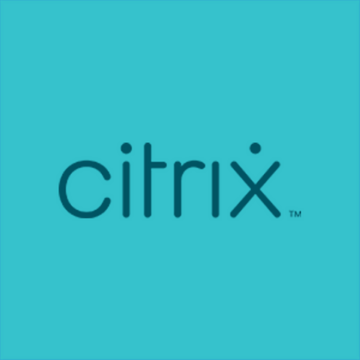In the ever-changing IT landscape, Citrix is pushing the limits of what’s possible for our customers and partners. It’s exciting how we’re helping them use our technologies, from moving workloads to the cloud, thinning down endpoints, and tweaking our ICA protocol to maximize graphics performance.
Take one of my Citrix Service Provider partners, Connecticut-based SNP Technologies. I worked with them throughout the first half of 2019 to create an offering in the cloud that they have brought to market successfully. SNP is an entirely cloud-focused CSP, and in this blog post, I’ll share their use case and the technology they used to accomplish their goals.
SNP Technologies came to the Citrix CSP team with one goal in mind — to verticalize and go to market targeting high-end architecture, design, and engineering firms. They wanted to tackle two pain points for this niche market:
- Endpoints with built-in graphics cards are expensive
- No central way to manage and maintain security on any of the data created on these endpoints
In partnership with SNP Technologies, we devised a plan to tackle these issues, leveraging the latest technologies from both Citrix and Microsoft. How did we do it? Let’s take a look at the technology.
Technology in Practice
Architecture, design, and engineering firms use graphics-intensive applications such as AutoDesk and SolidWorks, which require more than the average amount of hardware resources to operate properly. As a 100 percent cloud-focused partner, SNP Technologies naturally leveraged the Citrix Cloud Virtual Apps and Desktops service to save on compute costs and the cost of deploying and maintaining a Citrix environment. It also made onboarding new customers easier. They used GPU-enabled Azure N-Series VMs running Windows 10 to deliver the best user experience for their customers. In their offering, each end user gets a high-end Windows 10 desktop in the cloud, preinstalled with the applications they need to get their work done, all while keeping the data locked down and secured from one management location.
Taking a quick glance at the cost of compute on the Azure side for the N-Series VMs, one might think, “How is this solution viable from a cost perspective?” Citrix was able to help decrease the Azure compute cost dramatically for SNP Technologies by leveraging our Autoscale feature, exclusive to the Citrix Cloud Virtual Apps and Desktops service. Autoscale enables proactive power management of machines based on load, a schedule, or a combination of both. It also supports many VDA hosting platforms, including Microsoft Azure Resource Manager. Autoscale supports SNP Technology’s 100 percent cloud-first approach, doesn’t require on-prem installations, and is built in to the Virtual Apps and Desktops service at no additional cost.
Enabling an Optimal User Experience
I also want to cover some of the Citrix graphics policies we tweaked to enable an optimal user experience. One benefit of partnering with Citrix is that we have a team dedicated to creating graphics policies for all types of deployments. Our CSP team set up a meeting between one of our HDX graphics product managers and SNP Technologies to discuss different policy combinations specific to this type of deployment. After many testing cycles, here’s what we found to be optimal:
- Optimize for 3D Graphics Workload
- This setting configures the appropriate default settings that best suit graphically intense workloads and should only be used when a GPU is available to the session.
- Hardware Encoding for Video
- This setting allows the use of graphics hardware, if available, to compress screen elements with video (H.264) codec.
- Setting the Video Codec for Compression for the entire screen
- This setting allows use of a video codec (H.264) to compress graphics when video decoding is available on the endpoint. Select “For the entire screen” to optimize for improved user experience and bandwidth, especially in cases with heavy use of server-rendered video and 3D graphics.
- Setting the Target Frame Rate at the maximum of 60 Frames Per Second
- This setting specifies the maximum number of frames per second sent from the virtual desktop to the user device. Setting a high number of frames per second improves the user experience but requires more bandwidth. By default, the maximum is 30 frames per second.
- Setting Visual Quality to high
- This setting specifies the desired visual quality for images displayed on the user device. We found that “high” worked best for our use case, and we recommend that if you require visually lossless image quality.
- Graphics Status Indicator set to enabled
- This setting will configure the graphics status indicator to run in the user session. This will allow the user to see details on the graphics mode in use, including graphics provider, encoder, hardware encoding, image quality, progressive display status, and lossless text.
Please note, depending on the specific application and use case, policies will need to be tweaked. We recommend working with your Citrix engineer to determine what best fits your needs.
Finally, from a technology perspective, SNP Technologies leveraged the Citrix Gateway service, which is included in the Citrix Virtual Apps and Desktops license. Citrix Gateway has points of presence (PoPs) all over the world, enabling users to connect to the nearest location. SNP Technologies was able to include features like high availability and global server load balancing in their branded solution for their end customers without having to stand up or configure complicated networking architectures.
This deployment was exciting because we were able to break down barriers and show what’s possible with cloud, creating a solution that can be deployed in a matter of hours, which just wasn’t possible before. As a result, SNP Technologies’ onboarding of new customers has become seamless and almost effortless. The power of Citrix and Microsoft has reached new heights, and this deployment is proof that if you aren’t thinking about a cloud-first approach, you’re missing out and you’ll probably get left behind in this ever-changing market.




